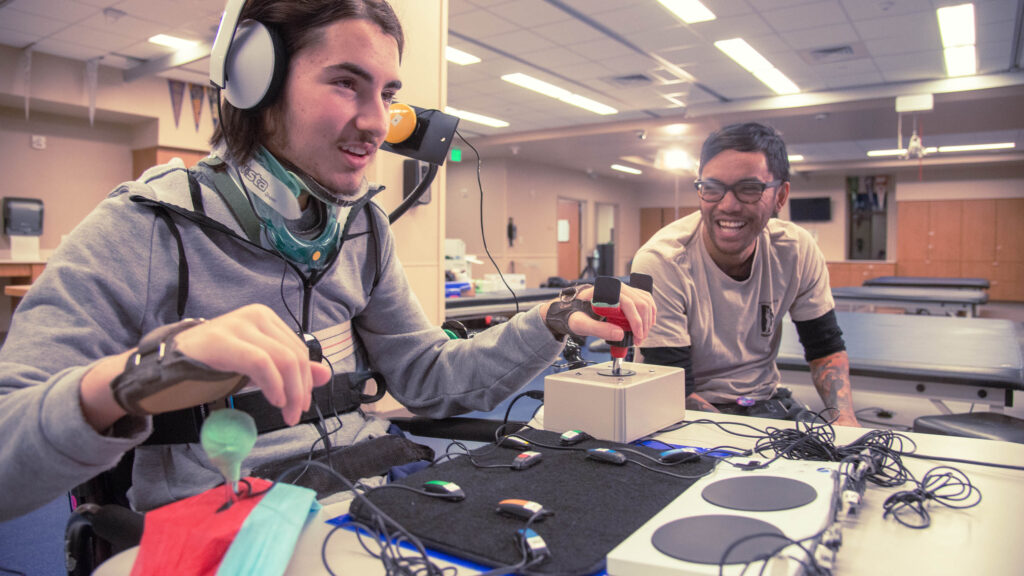In our rapidly advancing technological landscape, the power of innovation extends far beyond convenience—it has the potential to transform lives. One significant realm where technology plays a pivotal role is in enhancing accessibility for individuals with disabilities. This article explores the evolving landscape of assistive technologies and their profound impact on the lives of people with various disabilities
Understanding Disabilities:
Disabilities encompass a wide spectrum of conditions that may affect an individual’s physical, sensory, cognitive, or intellectual abilities. Recognizing the diversity of disabilities is crucial when developing technological solutions to ensure inclusivity for all individuals, including those with disabilities in adults.
Types of Disabilities:
The types of disabilities are diverse and can include physical disabilities, sensory impairments, intellectual disabilities, and mental health conditions. Each type presents unique challenges, and technology has emerged as a powerful tool in addressing these challenges and promoting equal opportunities.
Rights of Persons with Disabilities:
Central to the discussion of technology and accessibility are the rights of persons with disabilities. In many countries, laws and regulations have been put in place to protect these rights, emphasizing equal access to education, employment, and public spaces. Technological advancements play a crucial role in actualizing these rights and fostering a more inclusive society.
Technological Innovations Transforming Accessibility:
- Assistive Technologies:
Innovations in assistive technologies have revolutionized the way individuals with disabilities interact with the world. From screen readers and voice recognition software for the visually impaired to specialized keyboards and communication devices for those with motor impairments, technology is breaking down barriers. - Smart Devices and Wearables:
Smart devices and wearables have introduced a new era of accessibility. These devices, equipped with features like voice commands and haptic feedback, empower individuals with disabilities by providing them with tools for communication, navigation, and daily tasks. - Adaptive Software and Apps:
The development of adaptive software and applications has opened up new possibilities for people with various disabilities. Educational apps tailored to different learning styles, communication apps for non-verbal individuals, and cognitive aids for those with intellectual disabilities exemplify the transformative impact of technology. - Augmented and Virtual Reality (AR/VR):
AR and VR technologies are creating immersive experiences that benefit individuals with disabilities. These technologies can simulate environments for training purposes, aid in rehabilitation, and offer unique opportunities for individuals with mobility challenges to explore virtual spaces. - Web Accessibility and Inclusive Design:
The importance of web accessibility and inclusive design cannot be overstated. Ensuring that websites and digital platforms are designed with accessibility in mind guarantees that individuals with disabilities can access information, engage in online activities, and participate in the digital age on equal terms
Empowering Independence and Inclusion:
The overarching goal of technology in enhancing accessibility is to empower independence and foster inclusion. Whether it’s through customized solutions that cater to specific disabilities or universal design principles that benefit a broad spectrum of users, technology is a catalyst for creating a more accessible and equitable world.
Challenges and Future Directions:
While tremendous progress has been made, challenges remain in ensuring widespread accessibility. Issues such as affordability, awareness, and the need for continuous innovation persist. Future directions in this realm involve addressing these challenges, refining existing technologies, and developing new solutions that anticipate the evolving needs of individuals with disabilities.
Technology has become a beacon of hope and empowerment for individuals with disabilities, revolutionizing the way they navigate the world. By embracing the possibilities offered by assistive technologies, smart devices, adaptive software, and inclusive design, we move closer to a future where everyone, regardless of their abilities, can fully participate in all aspects of life. As we harness the power of technology, we not only enhance accessibility but also contribute to the realization of the rights of persons with disabilities and the creation of a more inclusive and equitable society.

